Experimental Study on the Local Drag of Completion String with Packers in Horizontal Wells
Abstract
:1. Introduction
2. Materials and Methods
2.1. The Packer in the Horizontal Open Hole
2.2. The Completion String with Packers in the Deviated Cased Hole
2.3. Packers with Different Materials in the Horizontal Section
3. Results and Discussion
3.1. The Local Drag of the Packer in the Horizontal Open Hole
3.2. The Drag of the Completion String with Packers in the Deviated Cased Hole
3.3. The Drag of Packers with Different Materials in the Horizontal Section
4. Decisions
5. Conclusions
Author Contributions
Funding
Conflicts of Interest
References
- Mason, C.J. Extended-Reach Drilling—What Is the Limit? SPE Annual Technical Conference and Exhibition: New Orleans, LA, USA, 1998. [Google Scholar]
- Gao, D.; Tan, C.; Tang, H. Limit analysis of extended reach drilling in South China Sea. Pet. Sci. 2009, 6, 166–171. [Google Scholar] [CrossRef] [Green Version]
- Michael, W. Pushing the extended reach envelope at sakhalin: An operator’s experience drilling a record reach well. In Proceedings of the IADC/SPE Drilling Conference and Exhibition, San Diego, CA, USA, 6–8 March 2012; Volume 2. [Google Scholar]
- Gao, D. Optimized Design and Control Techniques for Drilling and Completion of Complex-Structure Wells; China University of Petroleum Press: Dongying, China, 2011. [Google Scholar]
- Renard, G. Complex well architecture. In Proceedings of the IOR and Heavy Oils, the 15th World Petroleum Congress, Beijing, China, 12–17 October 1997. [Google Scholar]
- Lee, D.; Brandao, F. U-tube wells—Connecting horizontal wells end to end case study: Installation and well construction of the world’s first u-tube well. In Proceedings of the SPE/IADC Drilling Conference, Amsterdam, The Netherlands, 23–25 February 2005. [Google Scholar]
- Ibatullin, R.R.; Khisamov, R.; Ibragimov, N.G. A novel thermal technology of formation treatment involves bi-wellhead horizontal wells. In Proceedings of the SPE Middle East Oil and Gas Show and Conference, Bahrain, Bahrain, 15–18 March 2009. [Google Scholar]
- Poloni, R.; Sassi, G.; Valente, P.; Di Campli, A.; Bianchella, D. An innovative approach to heat heavy oil formations by means of two horizontally interconnected wells. In Proceedings of the SPE Annual Technical Conference and Exhibition, Florence, Italy, 19–22 September 2010. [Google Scholar]
- Gao, D.; Xian, B. Research on design models of multi-lateral well structure for coal-bed methane. ACTA Prtolei Sin. 2007, 28, 113–117. [Google Scholar]
- Qiao, L.; Shen, R.; Huang, H. Drilling technology of multi-branch horizontal well. ACTA Prtolei Sin. 2007, 28, 112–115. [Google Scholar]
- Retnanto, A.; Frick, T.P.; Brand, C.W.; Economides, M.J. Optimal configurations of multiple-lateral horizontal wells. In Proceedings of the SPE Western Regional Meeting, Anchorage, AK, USA, 22–24 May 1996. [Google Scholar]
- Konopczynski, M.R.; Hughes, J.; Best, J.E. A novel approach to initiating multi-lateral horizontal wells. In Proceedings of the SPE/IADC Drilling Conference, Amsterdam, The Netherlands, 28 February–2 March 1995. [Google Scholar]
- Loparev, D. Construction method of horizontal steam-injection and producing oil wells on the test sections OPU-4 and OPU-5 yarega heavy oil deposit. In Proceedings of the 2008 SPE Russian Oil & Gas Technical Conference and Exhibition, Moscow, Russia, 28–30 October 2008. [Google Scholar]
- McDaniel, B.W.; East, L.; Hazzard, V. Overview of stimulation technology for horizontal completions without cemented casing in the lateral. In Proceedings of the 2002 SPE Asia Pacific Oil and Gas Conference and Exhibition, Melbourne, Australia, 8–10 October 2002. [Google Scholar]
- McDaniel, B.W.; Willett, R.M. Stimulation techniques for low-permeability reservoirs with horizontal completions that do not have cemented casing. In Proceedings of the 2002 SPE Gas Technology Symposium, Calgary, AB, Canada, 30 April–2 May 2002. [Google Scholar]
- Wang, D.; Sun, J.; Li, Y.; Peng, H. An efficient hybrid model for nonlinear two-phase flow in fractured low-permeability reservoir. Energies 2019, 12, 2850. [Google Scholar] [CrossRef] [Green Version]
- Willett, R.M.; Borgen, K.G.; McDaniel, B.W. Effective stimulation proved to be the key to economic horizontal completions in low perm dolomite reservoir. In Proceedings of the 2002 SPE Western Regional Meeting/AAPG Pacific Section Joint Meeting, Anchorage, AK, USA, 20–22 May 2002. [Google Scholar]
- Wang, Q.; Wan, J.; Mu, L.; Shen, R.; Jurado, M.J.; Ye, Y. An analytical solution for transient productivity prediction of multi-fractured horizontal wells in tight gas reservoirs considering nonlinear porous flow mechanisms. Energies 2020, 13, 1066. [Google Scholar] [CrossRef] [Green Version]
- Surjaatmadja, J.B.; McDaniel, B.W.; Cheng, A.; Rispler, K.; Rees, M.J.; Khallad, A. Successful acid treatment in horizontal open holes using dynamic diversion and instant response downhole mixing-an in-depth postjob evaluation. In Proceedings of the 2002 Gas Technology Symposium, Calgary, AB, Canada, 30 April–2 May 2002. [Google Scholar]
- Rees, M.J.; Khallad, A.; Cheng, A.; Rispler, K.A.; Surjaatmadja, J.B.; McDaniel, B.W. Successful hydrajet acid squeeze and multifacture acid treatments in horizontal open holes using dynamic diversion process and/or downhole mixing. In Proceedings of the 2001 SPE Annual Technical Conference and Exhibition, New Orleans, LA, USA, 1–3 October 2001. [Google Scholar]
- Li, G.; Sheng, M.; Tian, S.; Huang, Z.; Li, Y.; Yuan, X. Multistage hydraulic jet acid fracturing technique for horizontal wells. Pet. Explor. Dev. 2012, 39, 100–104. [Google Scholar] [CrossRef]
- Zhang, Y. Research on Key Problems of Mechanics for Multi-Packers Fracturing Strings Pass Ability in Horizontal Well; Northeast Petroleum University: Heilongjiang, China, 2011. [Google Scholar]
- Wang, F.; He, Q.; Chen, F.; Li, G.; Zhang, Y. Feasibility analysis of running fracturing string into horizontal wells and its application in honghe oilfield. China Petroleum Mach. 2014, 27, 30–34. [Google Scholar]
- Zhang, L. High-Inclination Well Fracturing String Tripping Ability Analysis and Study. Master’s Thesis, Xi’an Shiyou University, Xi’an, China, 2012. [Google Scholar]
- Wang, Y. Study on the Tripability of Completion String in Horizontal Well. Master’s Thesis, China University of Petroleum (EastChina), Qingdao, China, 2008. [Google Scholar]
- Cai, H. Running Ability Analysis of Fracturing Strings in Horizontal Well. Master’s Thesis, China University of Petroleum (EastChina), Qingdao, China, 2014. [Google Scholar]
- Liu, C. Study on Evaluation Method of Frac-String Tripping Ability in Horizontal Well. Master’s Thesis, China University of Petroleum (EastChina), Qingdao, China, 2015. [Google Scholar]
- Liang, Q.; Yang, Y.; He, J.; Zhang, Y. Discussion on friction/drag coefficient control methods. Drill. Prod. Technol. 2019, 42, 11–13. [Google Scholar] [CrossRef]
- Aiping, D.C.D.S.L.; Long, Z.S.W. Research of critical condition for grains at bed surface in highly deviated wells. Pet. Drill. Tech. China 2010, 3, 22–26. [Google Scholar]
- Wu, X.; Xia, J.; Guan, B.; Yan, X.; Zou, L.; Liu, P.; Yang, L.; Hong, S.; Hu, S. Water availability assessment of shale gas production in the weiyuan play, China. Sustainability 2019, 11, 940. [Google Scholar] [CrossRef] [Green Version]
- Zhu, X.; Shen, K.; Li, B.; Lv, Y. Cuttings transport using pulsed drilling fluid in the horizontal section of the slim-hole: An experimental and numerical simulation study. Energies 2019, 12, 3939. [Google Scholar] [CrossRef] [Green Version]
- Wei, N.; Liu, Y.; Cui, Z.; Jiang, L.; Sun, W.; Xu, H.; Wang, X.; Qiu, T. The rule of carrying cuttings in horizontal well drilling of marine natural gas hydrate. Energies 2020, 13, 1129. [Google Scholar] [CrossRef] [Green Version]
- Huang, W.; Gao, D. Mechanical mechanisms and control measures for periodic sticking in extended-reach drilling. Pet. Sci. Bull. 2020, 1, 49–57. [Google Scholar] [CrossRef]
- Zhou, J.; Zhang, F.; Ji, H.; Zhang, H.; Zhu, R.; Zhang, X. Research of borehole preparation technology for horizontal well with high temperature and deep carbonate rocks. Well Test. 2016, 1, 39–41. [Google Scholar]
- Wang, J.; Xia, T.; He, S.; Duan, Y.; Ding, Z.; Shi, Y. Borehole preparation technology for multistage stimulation in carbonate ultra-deep horizontal wells. Drill. Prod. Technol. 2015, 5, 96–98. [Google Scholar] [CrossRef]
- Zhang, S. Petroleum engineering drilling extended reach well with rotary steering drilling system. Acta Petrol. Sin. 2000, 1, 76–80. [Google Scholar]
- Zhang, L.; Zhang, G.; Spillian, J. Research on a rotational speed control strategy of the mandrel in a rotary steering system. Cent. Eur. J. Phys. 2018, 1, 668–674. [Google Scholar] [CrossRef] [Green Version]
- Pang, B.; Wang, S.; Wang, Q.; Yang, K.; Lu, H.; Hassan, M.; Jiang, X. Numerical prediction of cuttings transport behavior in well drilling using kinetic theory of granular flow. J. Petrol. Sci. Eng. 2018, 161, 190–203. [Google Scholar] [CrossRef]
- GhasemiKafrudi, E.; Hashemabadi, S.H. Numerical study on effects of drilling mud rheological properties on the transport of drilling cuttings. J. Energy Resour. ASME 2016, 138, 012902. [Google Scholar] [CrossRef]
- Song, X.; Xu, Z.; Wang, M.; Li, G.; Shah, S.N.; Pang, Z. Experimental study on the wellbore-cleaning efficiency of microhole-horizontal-well drilling. SPE J. 2017, 22, 1–189. [Google Scholar] [CrossRef]
- Denney, D. Pipe-rotation effect on hole cleaning for water-based drilling fluids in horizontal and deviated wells. J. Pet. Technol. 2008, 11, 65–68. [Google Scholar] [CrossRef]
- Ofei, T.N.; Yaaqob, S.Y. Numerical simulation of transport behavior of small cuttings in extended reach wells. Int. J. Oil Gas Coal Technol. 2019, 21, 149–168. [Google Scholar] [CrossRef]






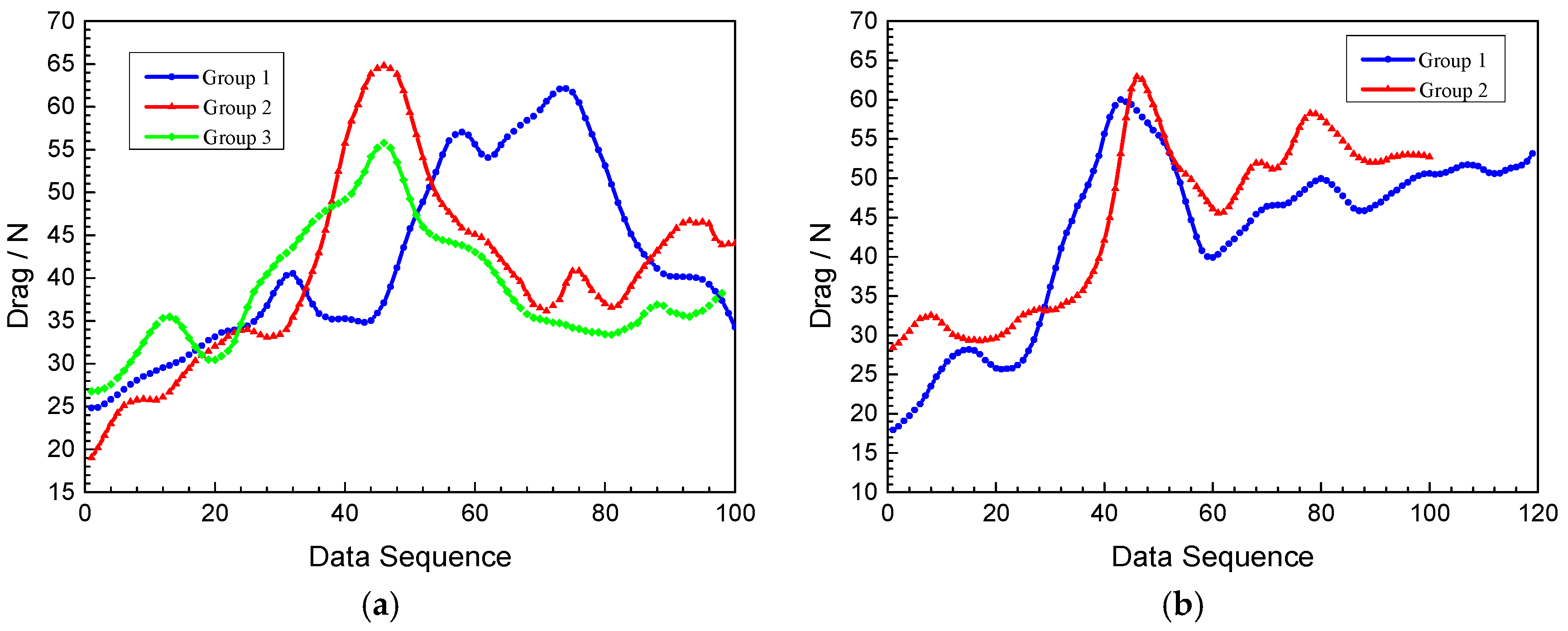

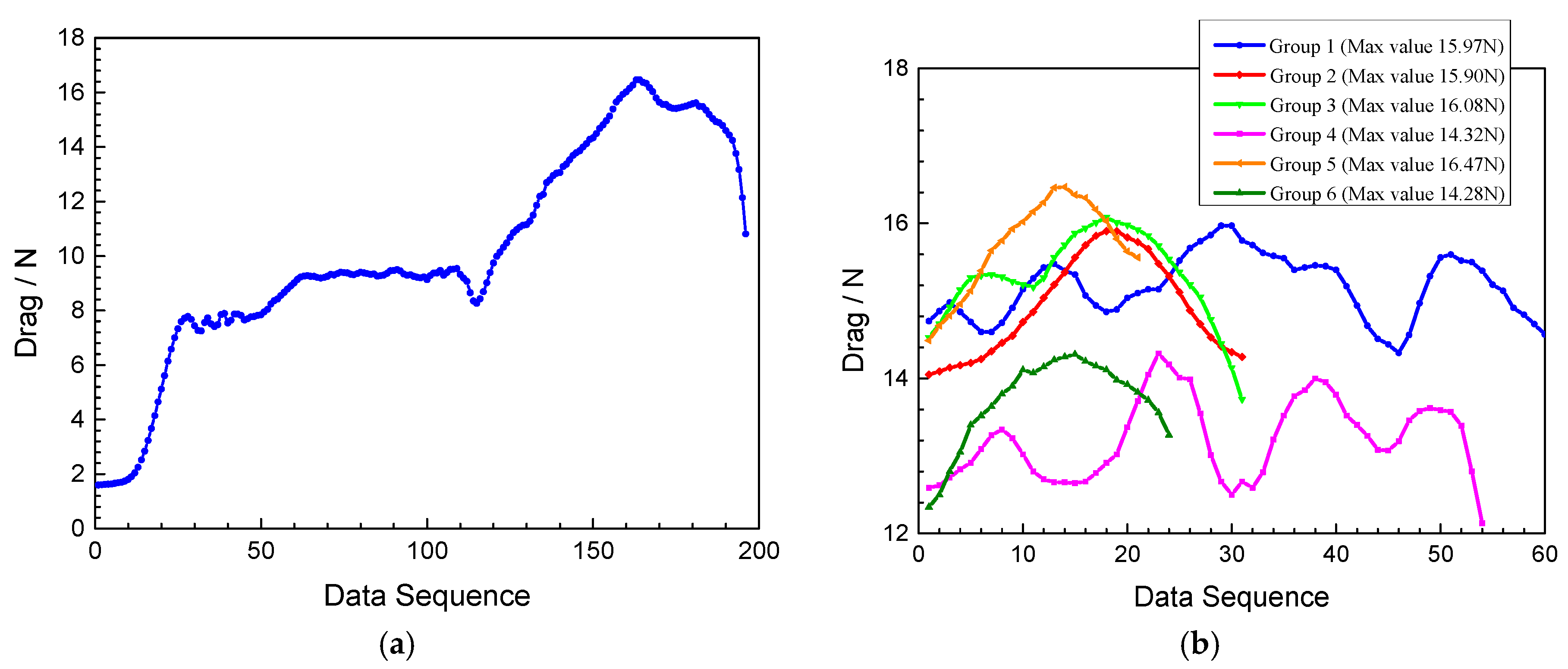
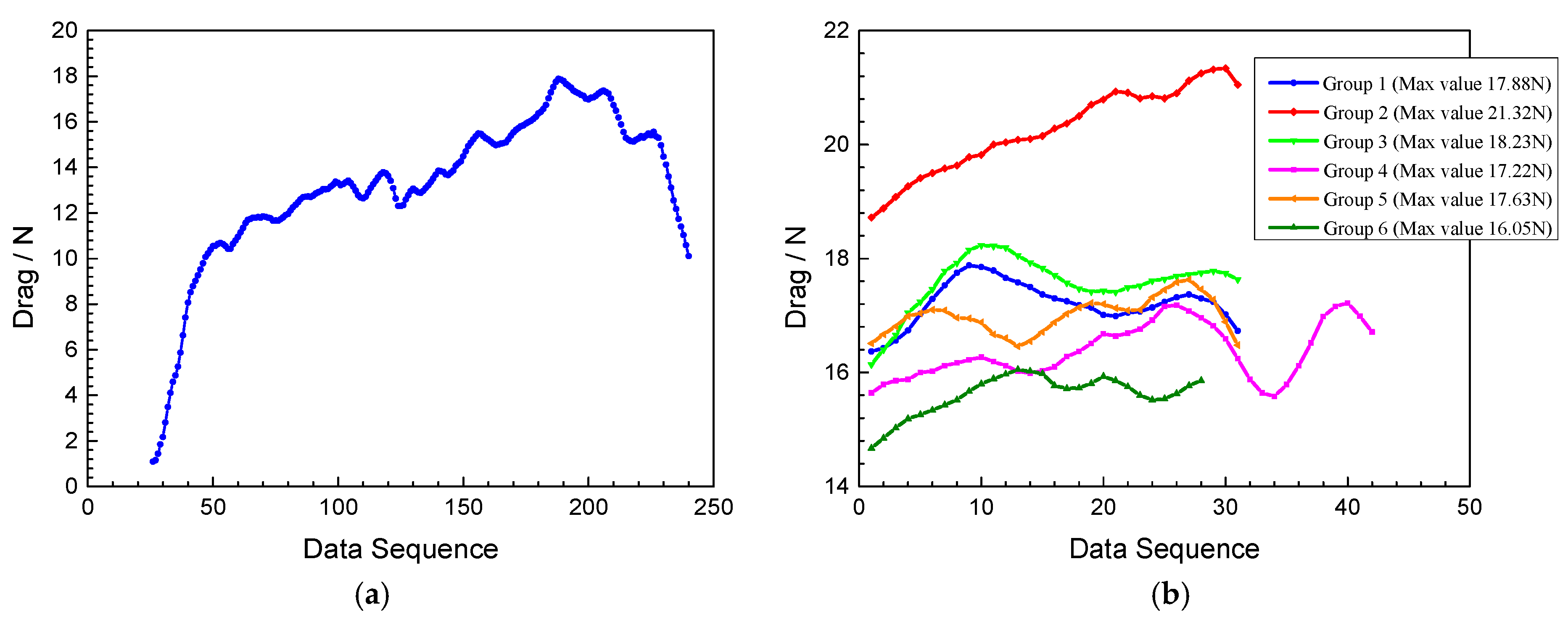
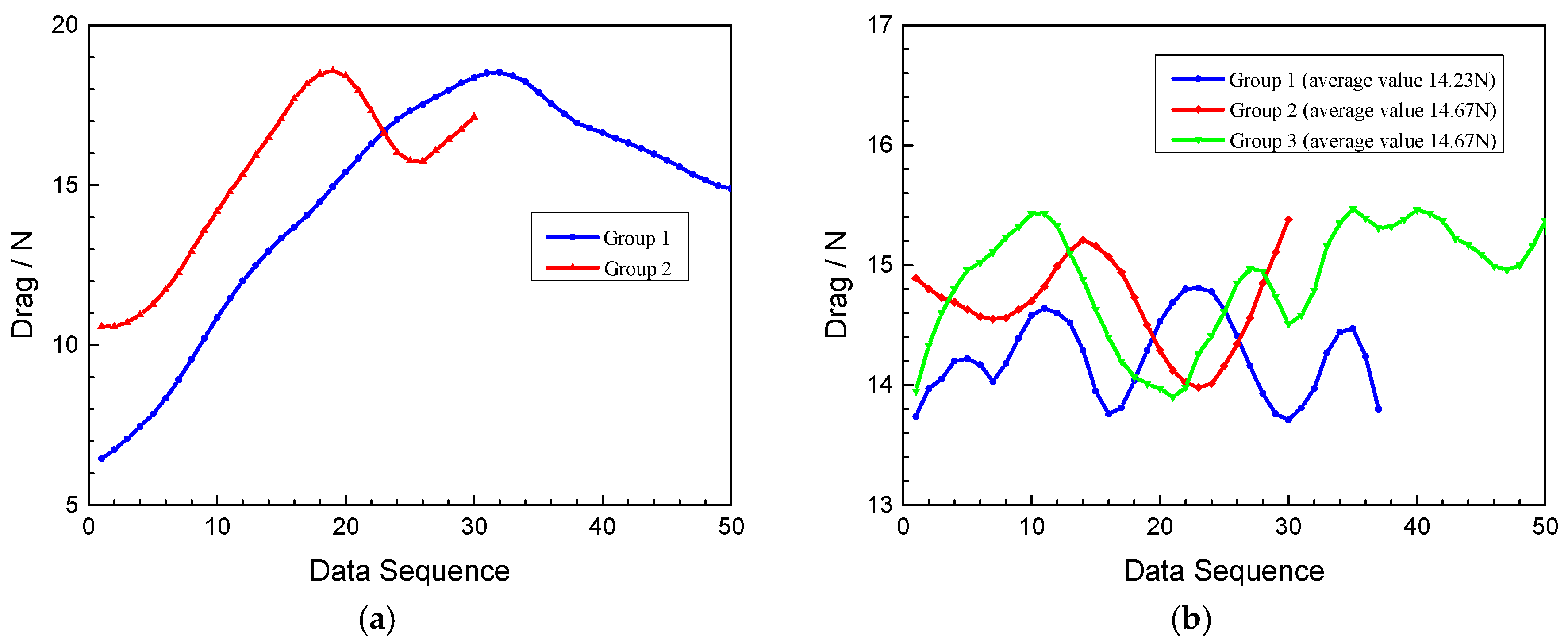
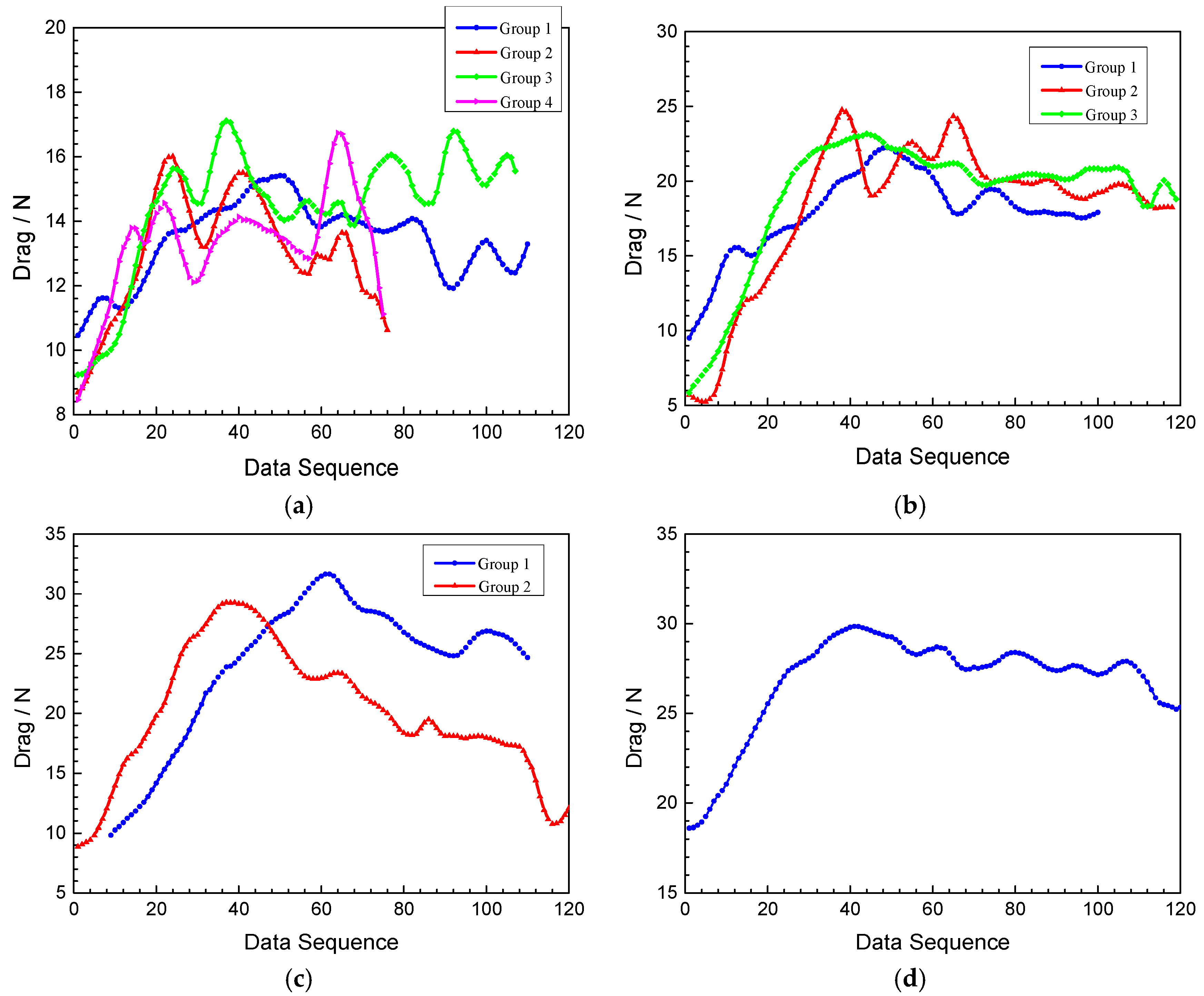

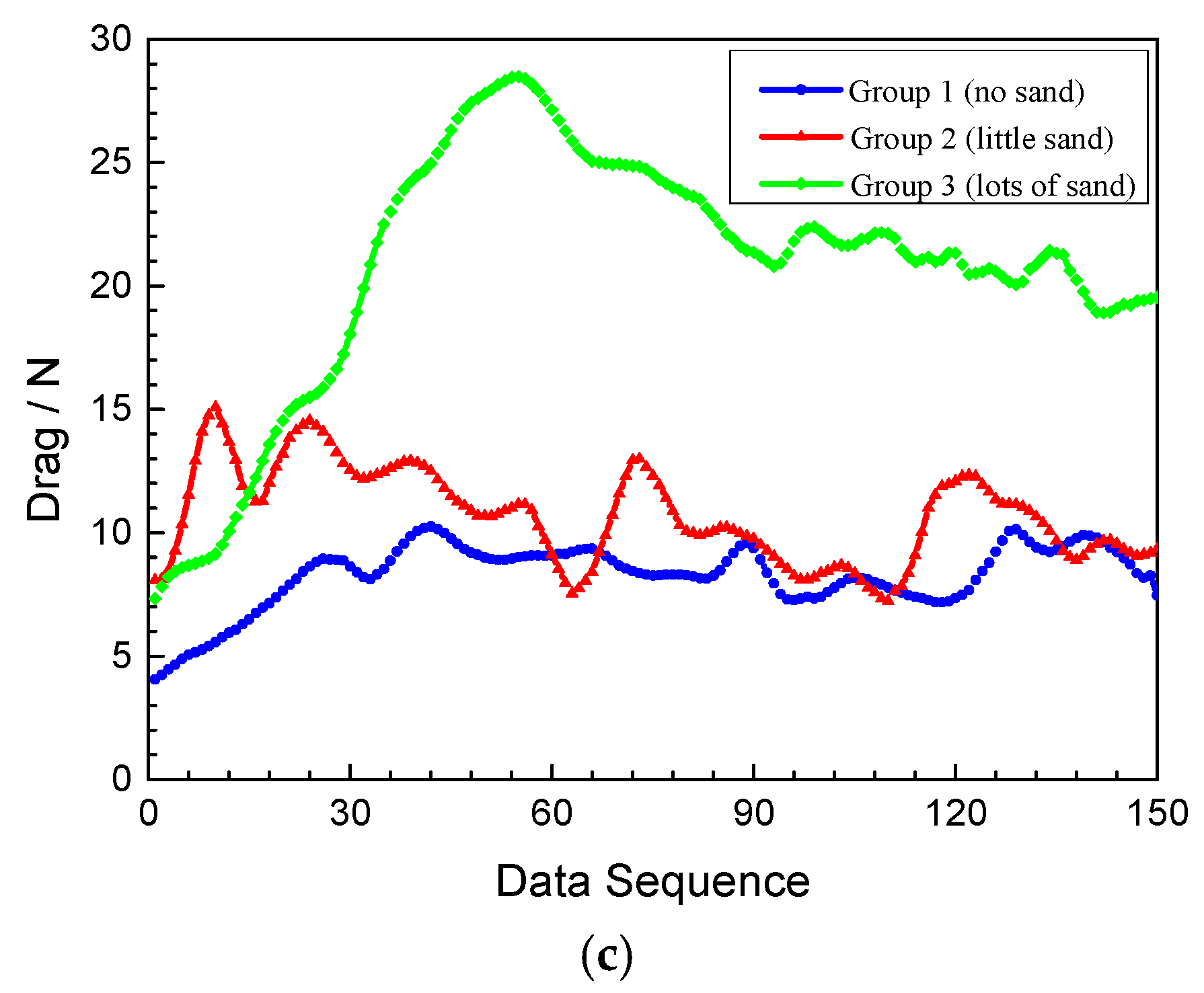
© 2020 by the authors. Licensee MDPI, Basel, Switzerland. This article is an open access article distributed under the terms and conditions of the Creative Commons Attribution (CC BY) license (http://creativecommons.org/licenses/by/4.0/).
Share and Cite
Liang, Q.; Xia, B.; Liu, B.; Nie, Z.; Gao, B. Experimental Study on the Local Drag of Completion String with Packers in Horizontal Wells. Coatings 2020, 10, 657. https://doi.org/10.3390/coatings10070657
Liang Q, Xia B, Liu B, Nie Z, Gao B. Experimental Study on the Local Drag of Completion String with Packers in Horizontal Wells. Coatings. 2020; 10(7):657. https://doi.org/10.3390/coatings10070657
Chicago/Turabian StyleLiang, Qimin, Bairu Xia, Baolin Liu, Zhen Nie, and Baokui Gao. 2020. "Experimental Study on the Local Drag of Completion String with Packers in Horizontal Wells" Coatings 10, no. 7: 657. https://doi.org/10.3390/coatings10070657



